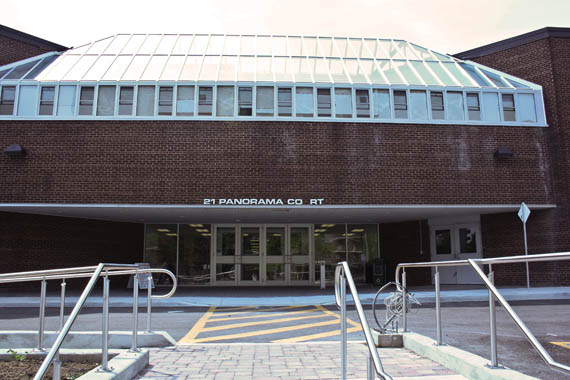The Association of Community Legal Clinics of Ontario has announced the first ever review of legal clinics and developed a
strategic plan for Ontario’s community legal clinic system.

“In addition to the natural level of evolution and changes that have happened over the last 40 years, we saw this as an opportunity to actually take a look at the future and come up with a plan for how to provide more services in a challenging fiscal environment,” says Lenny Abramowicz, executive director of ACLCO.
For lawyers, this means working more closely with their clients to address their systemic needs, not just their legal issues.
The plan outlines four key areas of change: increasing access to services, enhancing systemic educational work, strengthening community connections to legal clinics, and enhancing co-ordination on the administrative end.
“We wanted to find ways to maximize ways in which lawyers and non lawyers can provide legal services to the clients in a more effective way,” says Abramowicz. “You look around and you see funders in a variety of areas — health, education, social services — making decisions simply to take out an axe and cut services, or replace services with 1-800 numbers and web sites.
“There’s a place for those types of things but we believe that when it comes to legal services for low income people . . . replacing representation by a lawyer with a pamphlet or five minutes of summary advice on a web site would be a disaster.”
So, the plan is, “by doing things more efficiently we can save money and reallocate it back into the services.”
To cut administrative costs and increase community ties, “some clinics are talking about co-locating, moving to a hub with other community agencies to share administrative back offices or rent so we can reallocate some of the resources from back office towards the service provision,” said Abramowicz.
For example, Toronto’s Rexdale Community Legal Services clinic has recently moved into the Rexdale Hub, “and there are a number of social service agencies that are located in this hub. The idea is that if we are located in a hub like that with other social services agents, regardless of who the person comes to, we will be able to work in a co-ordinated fashion so that the needs of the person are addressed.”
This will cause lawyers to play a more active role in the social work that goes on in marginalized communities.
“Our lawyers will be working in close collaboration with those other agencies — the food bank, the health center, the employment center — so they won’t be working in isolation. And that’s a new way for lawyers to work. To work not just as a lawyer but to work as part of a team,” Abramowicz tells Legal Feeds.
Demand for legal clinics has grown in specific areas, namely immigration and social assistance. Recent immigrants, according to Abramowicz, historically settled in downtown Toronto.
“Now you can go across the province and find large groups of recent immigrants, people who are dealing with the issues of getting started,” he says.
A similar shift can be seen in poverty demographics.
“Once upon a time you’d find the greatest concentration of poverty in downtown Toronto. Today any trip to the outlining regions of the GTA — Mississauga, Scarborough, to Vaughan — will show you that that has shifted and those communities also have deep pockets of low-income individuals.”
Because the demographics of issues facing legal clinics have become more widespread, lawyers and legal workers need more efficient ways to share information.
One part of the plan is the Knowledge Now Project, which involves using wikis and an intranet to share data among clinics.
“If one of us is doing a case about one issue, we can upload that information onto a wiki so that other lawyers across the province have access to the cases and legal work that’s been done so we’re not reinventing the wheel 77 times,” says Abramowicz.
Another step to increase efficiency and cut costs is to bundle similar cases that are being handled by clinics. Abramowicz explains that most of the people heard at certain tribunals for issues like immigration and social assistance, are represented almost entirely by legal clinics.
“If there are a large number of cases in one area, dealing with one issue, we would work with the social justice cluster to ensure that perhaps those cases are bundled together and heard together rather than have 150 different cases across the province. We would work with them to bring a couple cases forward that would be able to deal with that issue,” he said.
There will also be more expectations for lawyers to establish community connections.
“Even though clinics already do this, what we are doing is moving towards clinics becoming even more firmly entrenched in their communities,” said Abramowicz.

 “In addition to the natural level of evolution and changes that have happened over the last 40 years, we saw this as an opportunity to actually take a look at the future and come up with a plan for how to provide more services in a challenging fiscal environment,” says Lenny Abramowicz, executive director of ACLCO.
“In addition to the natural level of evolution and changes that have happened over the last 40 years, we saw this as an opportunity to actually take a look at the future and come up with a plan for how to provide more services in a challenging fiscal environment,” says Lenny Abramowicz, executive director of ACLCO.